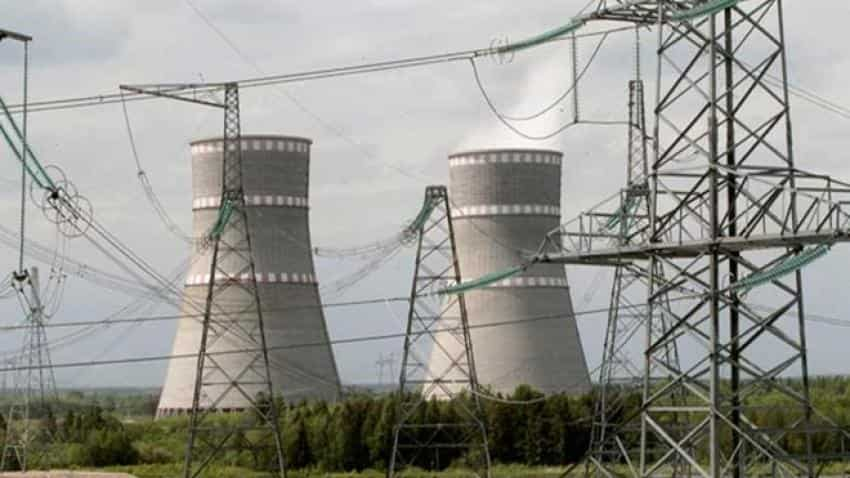CERC debates on tariff structure for thermal power plants
In view of decreasing PLF of the thermal generating stations, the Central Electricity Regulatory Commission (CERC) is relooking the current two-part tariff structure and seeking feed back from stakeholders to replace it with a three-part tariff structure

In view of decreasing PLF of the thermal generating stations, the Central Electricity Regulatory Commission (CERC) is relooking the current two-part tariff structure and seeking feed back from stakeholders to replace it with a three-part tariff structure. This in turn could encourage signing of long term PPAs by the state owned power distribution companies as it may decrease some of the stress in the power sector for units unable to complete the project or remain idle due to lack of long term power demand agreements, an utility company official told PTI.
Due to low demand, coal based power plants are running at a PLF of around 60 per cent. PLF in 2017-18 was 59.68 down from 77.5 per cent in 2009-10, while the government forecasts the same to go lower to 56.50 by FY22'. Consequently, the states have not been coming forward for long term power purchase to avoid fixed cost liability and they have been resorting to short term power purchase to meet their demand, the CERC said in its latest tariff consultation paper.
The two-part tariff system structure is suitable when the demand for power ensures utilization of capacity or around the target availability, CERC has said in its new 2019-2024 tariff consultation paper. Two-part tariff operates well in power deficit scenario. The CERC seeks feedback on three parts tariff-fixed charge (for recovery of fixed cost consisting of depreciation for repayment, interest on loan and guaranteed return to the extent of risk free return and part of operation and maintenance expenses), variable charge (incremental return above guaranteed return and balance operation and maintenance expenses) and energy charges (fuel cost, transportation cost and taxes, duties of fuel).
The recovery of fixed component could be linked to target availability, whereas variable component could be linked to the difference between availability and dispatch. Fuel charges could be linked with dispatch, it said. CERC consultation paper on '2019-2024' tariff will remain open for comments and suggestions till July 15. The CERC has also mooted consultation on increasing extension of useful life for very old thermal power plants which is now restricted at 25 years, giving a new lease of life to several power units.
"It is to be noted that performance of a unit does not necessarily deteriorate much with age, if proper O&M practises are followed," the regulator said. Extension of useful life is one of the options among others like phasing-out, renovation and replacement with super critical plants. According to central electricity authority, the capacity of coal based thermal power plants more than 25 years old is about 37,453 MW, out of which around 35,506 MW capacity pertains to state/central sector, as on March 2016.
Get Latest Business News, Stock Market Updates and Videos; Check your tax outgo through Income Tax Calculator and save money through our Personal Finance coverage. Check Business Breaking News Live on Zee Business Twitter and Facebook. Subscribe on YouTube.
RECOMMENDED STORIES

SCSS vs FD: Which guaranteed return scheme will give you more quarterly income on Rs 20,00,000 investment?

Looking for short term investment ideas? Analysts suggest buying these 2 stocks for potential gain; check targets

SBI 444-day FD vs PNB 400-day FD: Here's what general and senior citizens will get in maturity on Rs 3.5 lakh and 7 lakh investments in special FDs?

Power of Compounding: How long it will take to build Rs 5 crore corpus with Rs 5,000, Rs 10,000 and Rs 15,000 monthly investments?
03:19 PM IST










 Hindustan Power Exchange gets CERC nod for high price contracts in 3 key markets
Hindustan Power Exchange gets CERC nod for high price contracts in 3 key markets Tata, Adani, Essar Power case: Experts hail SC order, say will help firms to provide power to states at competitive rates
Tata, Adani, Essar Power case: Experts hail SC order, say will help firms to provide power to states at competitive rates Telecom Commission approves forming National Trust Centre for M2M devices, apps certification
Telecom Commission approves forming National Trust Centre for M2M devices, apps certification Adani, Tata Power shares plunge on Supreme Court's decision over compensatory tariff
Adani, Tata Power shares plunge on Supreme Court's decision over compensatory tariff